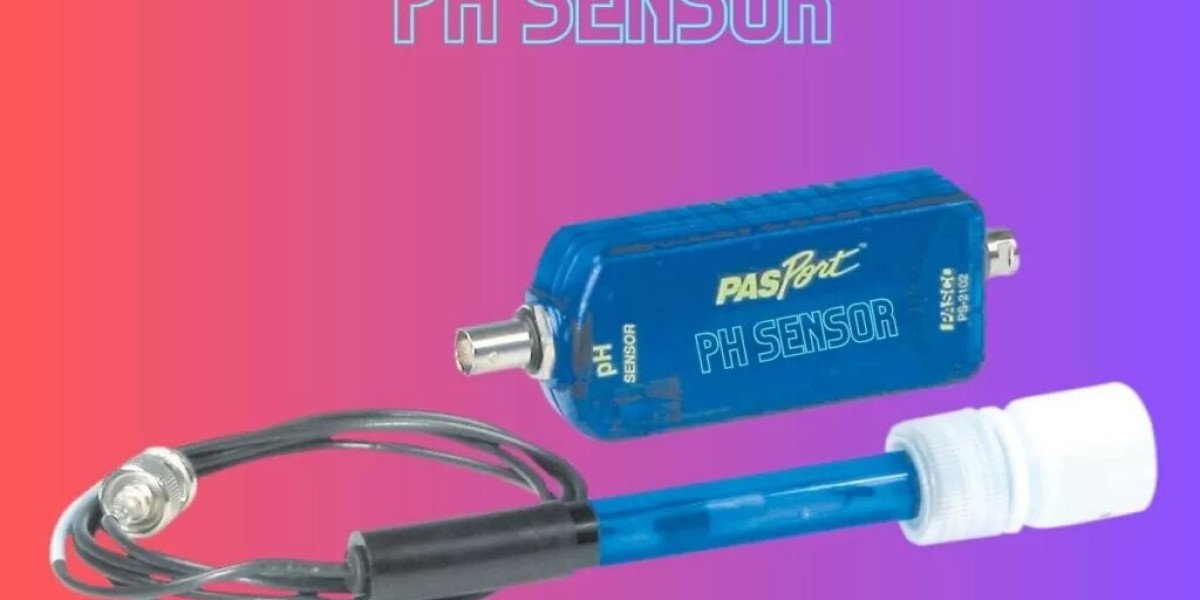These sensors are indispensable tools in processes ranging from water treatment to pharmaceutical manufacturing, food processing, and environmental monitoring. With the increasing need for accuracy in measurements and monitoring, pH sensors have become vital for maintaining optimal conditions and ensuring safety and quality standards are met.
What Is a pH Sensor?
At its core, a pH sensor is a device that measures the hydrogen ion concentration in a solution, determining its pH level. The pH scale ranges from 0 to 14, with 7 being neutral. A pH below 7 indicates an acidic solution, while a pH above 7 represents an alkaline or basic solution. pH sensors typically consist of a probe with a glass electrode that interacts with the solution to generate a measurable voltage, which is then converted into a pH value by the connected meter.
How pH Sensors Work
The operation of a pH sensor is based on the principle of electrochemical reactions. The glass electrode, which forms the heart of most pH sensors, is selectively sensitive to hydrogen ions. When immersed in a solution, the glass electrode develops a potential difference based on the concentration of hydrogen ions, which is then measured and translated into a pH reading. A reference electrode is also part of the system, providing a stable comparison for the measurements.
The output from the pH sensor is typically fed to a pH meter, where the reading is displayed in real time. Advances in technology have made pH sensors increasingly accurate, with digital sensors and wireless data transmission improving both the convenience and efficiency of measurements.
Applications of pH Sensors
Water Treatment : pH sensors are vital for monitoring water quality in municipal water treatment plants, ensuring that water remains within safe pH ranges. This is critical for both human consumption and maintaining the health of aquatic ecosystems.
Agriculture : In agriculture, soil pH significantly impacts plant growth. pH sensors are used to monitor soil conditions, helping farmers optimize the pH balance for different crops. This can lead to better yields and more sustainable farming practices.
Food and Beverage Industry : pH plays a crucial role in food production, affecting taste, texture, and preservation. pH sensors are used to monitor the acidity of products like dairy, beer, and canned goods, ensuring product consistency and safety.
Pharmaceutical Industry : In pharmaceutical production, pH sensors ensure the proper formulation of drugs, where even minor changes in pH can affect the chemical stability and efficacy of a product. These sensors are used during both production and quality control phases.
Environmental Monitoring : Environmental agencies use pH sensors to monitor natural water bodies, such as rivers, lakes, and oceans, to assess the health of ecosystems. pH changes can be indicative of pollution or the effects of climate change.
Types of pH Sensors
There are various types of pH sensors available, each suited for different applications. Some common types include:
- Glass Electrode pH Sensors : The most common type, used in laboratory and industrial settings.
- Ion-Selective Electrode (ISE) pH Sensors : Used for specific ion measurements in complex solutions.
- Solid-State pH Sensors : A more durable alternative, suitable for environments that require high resistance to wear and tear.
Conclusion
pH sensors are indispensable in ensuring that processes remain within desired parameters, preventing costly mistakes, and ensuring safety, efficiency, and quality. As technology continues to advance, these sensors are becoming more precise, reliable, and accessible. Whether it's in environmental monitoring, industrial production, or research, pH sensors remain an essential tool for achieving consistent and optimal results. Their versatility and importance across a wide range of industries make them an invaluable asset in the modern world.








